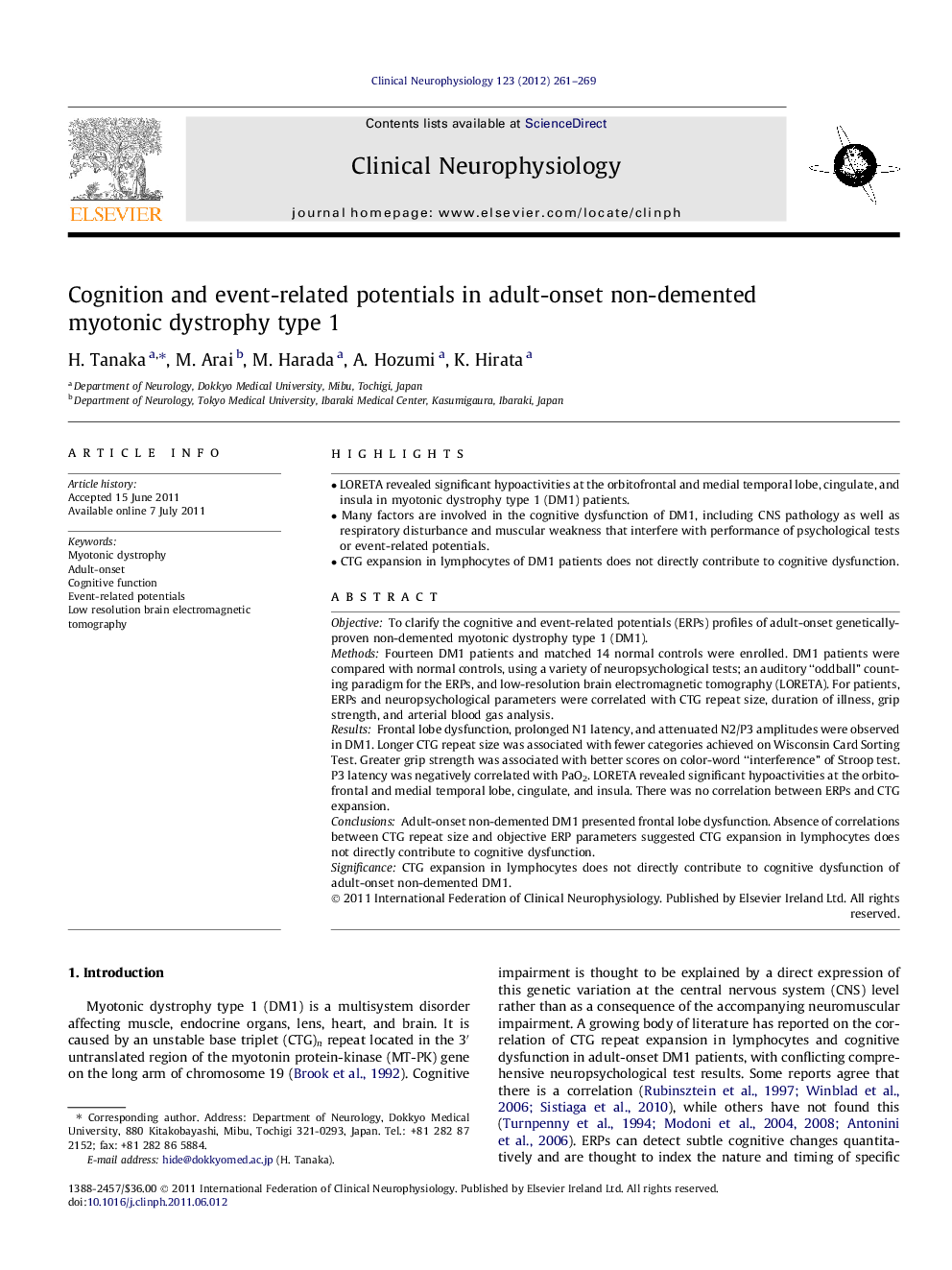| Article ID | Journal | Published Year | Pages | File Type |
|---|---|---|---|---|
| 3045623 | Clinical Neurophysiology | 2012 | 9 Pages |
ObjectiveTo clarify the cognitive and event-related potentials (ERPs) profiles of adult-onset genetically-proven non-demented myotonic dystrophy type 1 (DM1).MethodsFourteen DM1 patients and matched 14 normal controls were enrolled. DM1 patients were compared with normal controls, using a variety of neuropsychological tests; an auditory “oddball” counting paradigm for the ERPs, and low-resolution brain electromagnetic tomography (LORETA). For patients, ERPs and neuropsychological parameters were correlated with CTG repeat size, duration of illness, grip strength, and arterial blood gas analysis.ResultsFrontal lobe dysfunction, prolonged N1 latency, and attenuated N2/P3 amplitudes were observed in DM1. Longer CTG repeat size was associated with fewer categories achieved on Wisconsin Card Sorting Test. Greater grip strength was associated with better scores on color-word “interference” of Stroop test. P3 latency was negatively correlated with PaO2. LORETA revealed significant hypoactivities at the orbitofrontal and medial temporal lobe, cingulate, and insula. There was no correlation between ERPs and CTG expansion.ConclusionsAdult-onset non-demented DM1 presented frontal lobe dysfunction. Absence of correlations between CTG repeat size and objective ERP parameters suggested CTG expansion in lymphocytes does not directly contribute to cognitive dysfunction.SignificanceCTG expansion in lymphocytes does not directly contribute to cognitive dysfunction of adult-onset non-demented DM1.
► LORETA revealed significant hypoactivities at the orbitofrontal and medial temporal lobe, cingulate, and insula in myotonic dystrophy type 1 (DM1) patients. ► Many factors are involved in the cognitive dysfunction of DM1, including CNS pathology as well as respiratory disturbance and muscular weakness that interfere with performance of psychological tests or event-related potentials. ► CTG expansion in lymphocytes of DM1 patients does not directly contribute to cognitive dysfunction.
